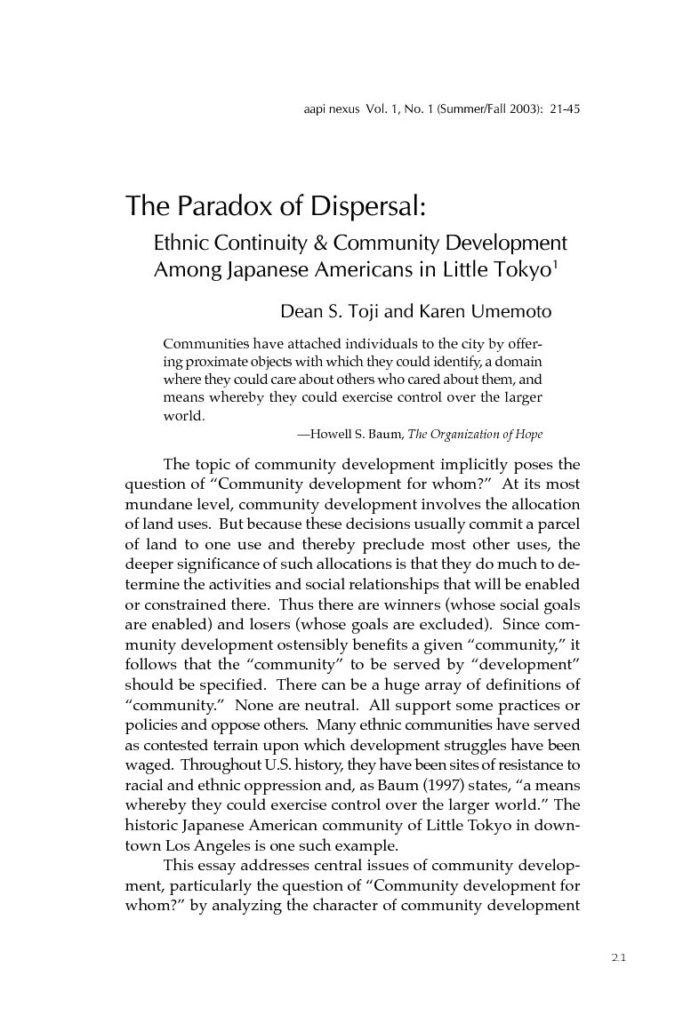“The Paradox of Dispersal: Ethnic Continuity & Community Development Among Japanese Americans in Little Tokyo”
Volume 1:1, p. 21 (2003)
by Dean S. Toji and Karen Umemoto
ABSTRACT: This article talks about the formation of communities and its implications. Little Tokyo is pointed out as an example of a community borne out as a result of a segregationist US society. During World War II there was a dramatic decline in the construction of Little Tokyo since Japanese people were put into interment camps. There is a dramatic shift of the function of Little Tokyo before the war and after the war. Post-WW II demonstrates“ paradox dispersal” because as the ethnic population was no longer heavily concentrated in one area the historic Little Tokyo communities assumed a new importance as they are regarded as a symbol ethnic identity and community. The power struggle in the community is part of a broader political, economic, and cultural issue. Three forces are responsible for shaping the history of community development in Little Tokyo: Japanese corporations, the region’s elite development regimes, and local Japanese American organizations. Post WW II “urban renewal” opened the door to Japanese corporate capital. This policy is discussed insofar as it influences the community. By late 1980s Japanese Americans were able to shape the Little Tokyo development as they gain more economic power. The ‘recreation center’ controversy is discussed.
PREVIEW:

 Download
Download
Article Citation: Dean Toji and Karen Umemoto (2003) The Paradox of Dispersal: Ethnic Continuity & Community Development Among Japanese Americans in Little Tokyo. AAPI Nexus: Policy, Practice and Community: 2003, Vol. 1, No. 1, pp. 21-46. https://doi.org/10.36650/nexus1.1_21-46_TojiEtAl
